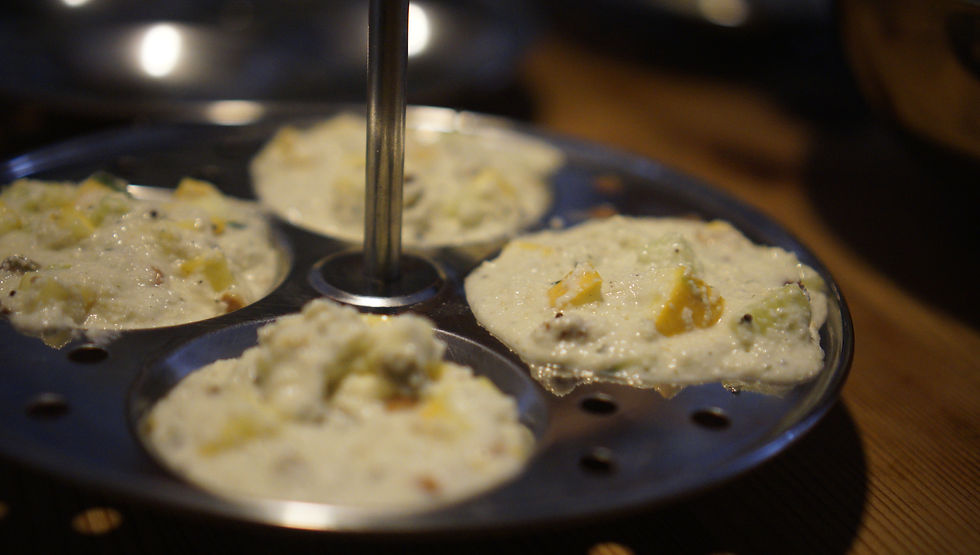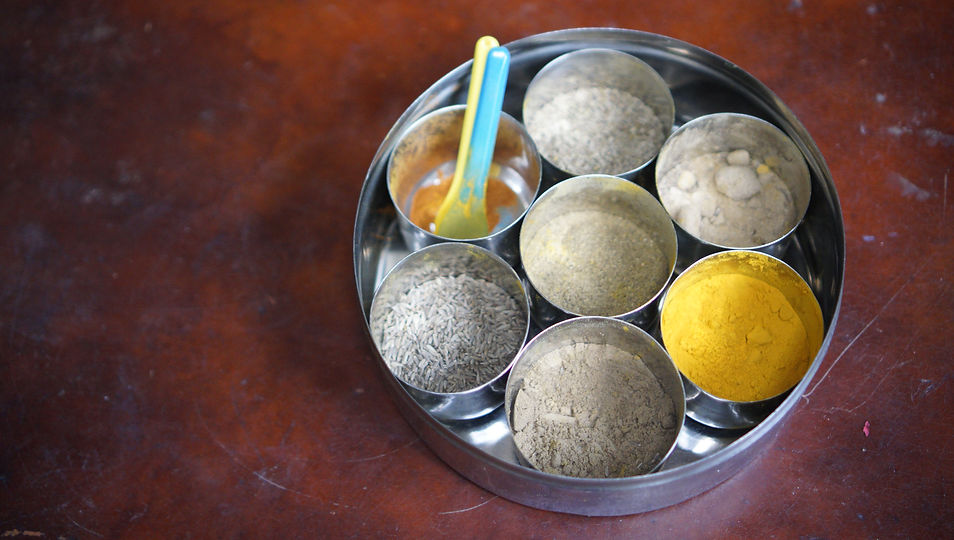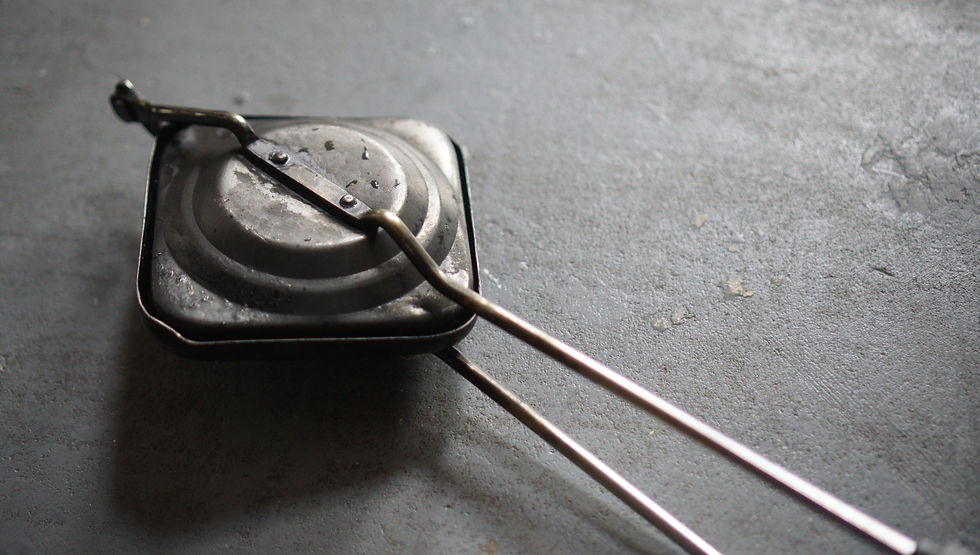INDIA
Gandharv
Bhagat
"Most of my food driven experiments are run by taste. It's tasty, I want it, I can’t get it outside of the same calibre."

A tinkerer, film maker and master of many things, Gandharv is originally from Jangpura,
a neighborhood in New Delhi, India. He grew up in a big house with his grandparents, two aunts and uncles, a dog, and five boys. He moved to Atlanta, USA when he was 17 years old with his parents and brother and moved to NYC in 2009.
Now he lives with his girlfriend in Brooklyn near the Navy Yard.
In their loft you can find numerous vintage cameras, most in perfectly working condition, lots of unfinished projects, calligraphy pens, and a kitchen full of cooking utensils and spices. When we asked him what in his house was from his culture, he brought out four things, all from the kitchen. His passion for cooking is no secret.
Idli Maker
A kitchen utensil to make a variety of steamed rice cakes

The Idli Maker
Recalling memories of his childhood, Gandharv explains that an “Idli is a healthy, steamed breakfast [snack] made from fermented lentils and rice or semolina flour”. His mom used to make for him when he was young and now he makes them once a week with an Idli Maker gifted to him by his aunt. While he stirs the batter and pours the molds, he tells us that he only uses the maker for idlis but is curious about other uses. “Since its essentially a steamer, [he] want[s] to experiment making other things like dumplings”
As we feast on the steamy delicate squash idlis he exclaims, “Most of my food driven experiments are run by taste. [If] it’s tasty, I want it, I can’t get it outside of the same calibre.”


















Masala Dabba
A spice box with the essentials needed for cooking

The Masala Dabba
Masala dabba literally translates to Spice Box. Pulling out his spice box from a kitchen cabinet, Gandharv explains that “every Indian household has one [masala dabba] and is essentially a collection of most used spices in that house. It differs from house to house, state to state and culture to culture”. Gandharv’s masala dabba was a gift from his mom when he moved out of the house. As he opened his masala dabba, the aromas quickly filling the air, he goes on to explain the contents inside. “My spice box is a collection of spices to make food that’s most familiar to me, the food that my mom makes. It contains seven spices, turmeric, cumin, caraway seeds, garam masala, coriander powder, mango powder and red chilli powder”.
The reason a masala dabba is so integral in an Indian kitchen is because most Indian food recipes require a pinch of this and a pinch of that of multiple spices. As Gandharv explains, the masala dabba is the best way to add multiple spices quickly without having to open multiple jars. "The masala dabba is useful as the spices you keep in it are not used in big proportions and with masala dabba you can keep it out only in small badges as and when you need it. Its also easy to organize by having everything that you need to cook most Indian dishes”.





Sandwich Maker
A handheld, stovetop sandwich maker from the streets of India

The Sandwich Maker
India has a big culture of snacks. This handheld sandwich maker is something every Indian has seen either at a street side vendor or at home. “It is not any ordinary sandwich maker”, Gandharv exclaims, “it is a small device that takes white bread and turns it into a pocket of awesomeness filled with spiced potatoes used for making samosas and tikkis. We all grew up on them as children so there is definitely nostalgia attached to it”.
This stove top sandwich maker Gandharv uses a lot during camping. In an excited tone he explains how the clever design adds to the making of this sandwich, “it tapers on the sides in such a way that the bread gets sealed on the edges and packs all the insides like a pocket. Being a stove top device, you also get a charred outside and since the edges are pressed down to seal, it also gets crispier on the edges”. It is specifically designed for square small sandwich bread as that is the most commonly found sliced bread in India.





Pressure Cooker
The only way to cook

The Pressure Cooker
“Indian food is a slow long process, especially North Indian cuisine. To shorten that process, pressure cooker plays a huge role”, explains Gandharv as he pulls out his much used pressure cooker.
A pressure cooker is a common cooking object in every Indian kitchen. This is how it works. There is a pressure valve at the top that lets lose steam when the pressure inside the cooker gets to a certain level. For why it is such an important tool in an Indian kitchen, Gandharv tells us, “in some way pressure cooker liberated Indian women, since Indian household kitchens are still run by women. The ability that they can put on a device, that will cut down the cooking time from four hours to one hour and has audio visual cues, is really important for Indian cooks”.
Gandharv uses it regularly to make Dal, an Indian lentil stew, and for any processes that require tendering like beans (Kidney beans, chickpeas) or meats. He says it is also good for steaming vegetables quickly without losing minerals and moisture. Meats, rice, vegetables cook very well in pressure cooker along with anything that needs a liquid based preparation. “It is energy efficient as you aren’t losing too much heat and all the moisture is trapped in there” says Gandharv as he preps ingredients for dinner. The dish on the menu is ‘Chole Chicken’, a chickpea and chicken stew with lots of spices and garlic, found commonly in north of India and in Lahore, Pakistan.












